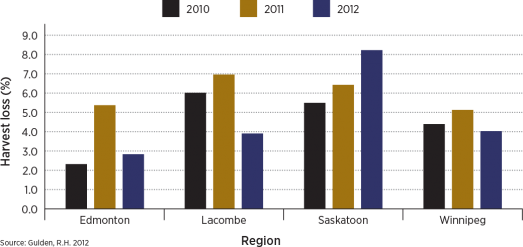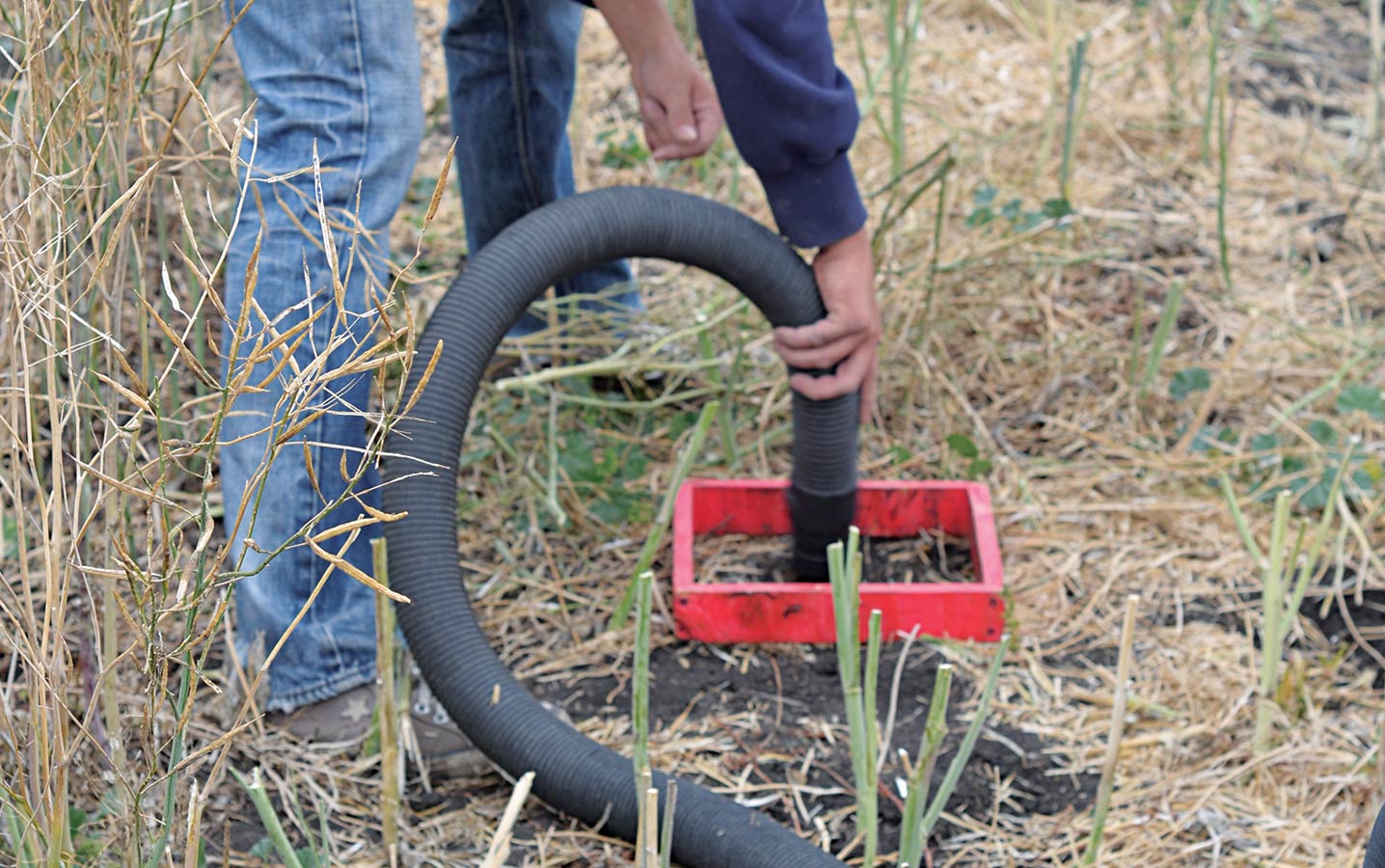Limit loss
Increased combine ground speed contributes significantly to harvest losses in canola, according to this study.
The study also found that higher yields — a sign of good management that starts at the time of planting — were associated with lower harvest losses.
On-farm harvest losses in canola are a complex phenomenon influenced by environment and management-specific factors. Several harvest-specific management variables suggest that, in some cases, harvest losses can be reduced by altering harvest practices.

Rob Gulden with the University of Manitoba surveyed harvest losses of canola on farms across Western Canada over three years, from 2010 to 2012. The survey was designed to determine whether harvest losses are similar across production areas of Western Canada, what factors strongly contribute to harvest losses, and if harvest losses in canola have changed over the past decade.
A total of 310 fields were surveyed in Alberta, Saskatchewan and Manitoba over the three years. Yield losses were determined using a vacuum cleaner method shortly after the crop was harvested.
For each field, producers were asked to prepare a survey questionnaire that addressed general agronomic information and specific harvest-related facts. This information was used to explain the harvest loss data.
In general, canola harvest losses from 2010 to 2012 were similar, as a percentage, to losses reported 10 years ago (Gulden et al. 2003) when canola losses were about 5.9 percent. However, generally higher yields of modern cultivars have resulted in greater absolute total harvest losses. This represents lost revenue for producers, and adds more seed to the volunteer canola seedbank. Six percent of 40 bu./ac. is 2.5 bu./ac. That’s 125 lb./ac., which is 25 times the typical seeding rate.
Some producers had very low losses while others had very high losses. Of the fields surveyed around Saskatoon, for example, the lowest loss was 3.8 percent and the highest was 11.2 percent. Of the producers surveyed around Lacombe, the lowest loss was 2.3 percent and the highest was 9.4 percent. These results suggest that management decisions at the producer level contribute to harvest losses in canola, and that some producers can consistently achieve lower harvest losses than others. Some reduction in proportional total harvest losses in canola is possible through improved management.

CONCLUSIONS
“Participating in the harvest loss survey made us more aware of how harvest timing affects canola losses. We left a few fields standing for straight combining this year because this survey showed us how swathing over-ripe canola can lead to increased losses. The survey also showed the importance of sclerotinia management. Our harvest losses were highest on fields with higher sclerotinia infection.”
– Lee Oatway, canola producer, Rosser, Manitoba
The survey included five Saskatchewan farms that both swathed and straight combined canola. No differences in harvest losses were observed in a side-by-side comparison between swath-harvested and direct-harvested canola on these farms. This is an encouraging result, however the number of producers who direct-harvested canola was low and a more thorough investigation is warranted if direct-harvesting becomes a more popular harvesting method.
While higher combine ground speed increased harvest losses, there was no evident difference between combine brands. Combine manufacturer and combine type (rotary or conventional) did not influence the total proportion of canola harvest losses.
Application of a fungicide at flowering did result in a reduction of proportional harvest losses of 1.4 percent, but absolute losses were not affected. This may suggest the fungicide played a role in increasing yield, or that fungicide applications were targeted only at fields with higher yield potential.
Choice of variety may play a role in canola harvest losses. Results from this survey suggest that this is not a dominant role and that other factors may be equally or more important in contributing to total harvest losses in canola.
No differences in proportional or absolute total harvest losses were attributable to the time of day of swathing. Similarly, time of day of combining, on its own, could not be identified as a significant factor contributing to total harvest losses.
Proportional harvest losses decreased with increasing canola yield. Management factors that contribute to high canola yield and earlier swathing dates, such as adequate canola plant density, resulted in proportionally lower harvest losses.
Principal investigator: Rob H. Gulden, University of Manitoba, Winnipeg, MB
Collaborators: Neil Harker, Linda Hall, Steve Shirtliffe, Chris Willenborg





